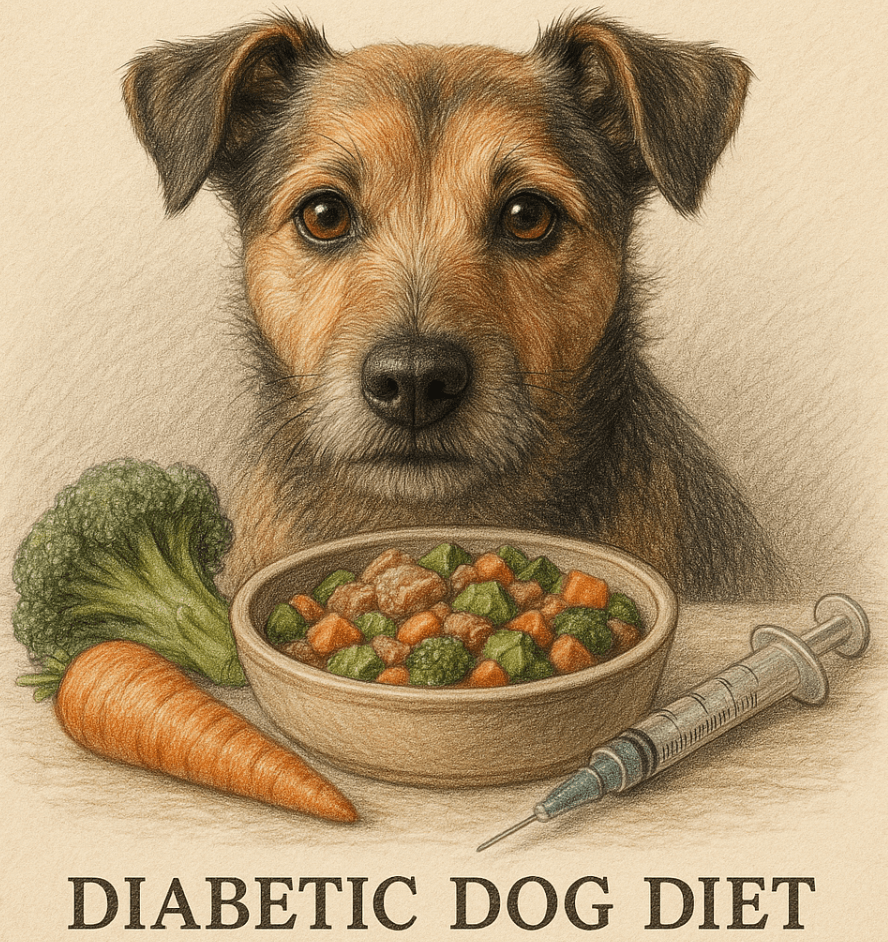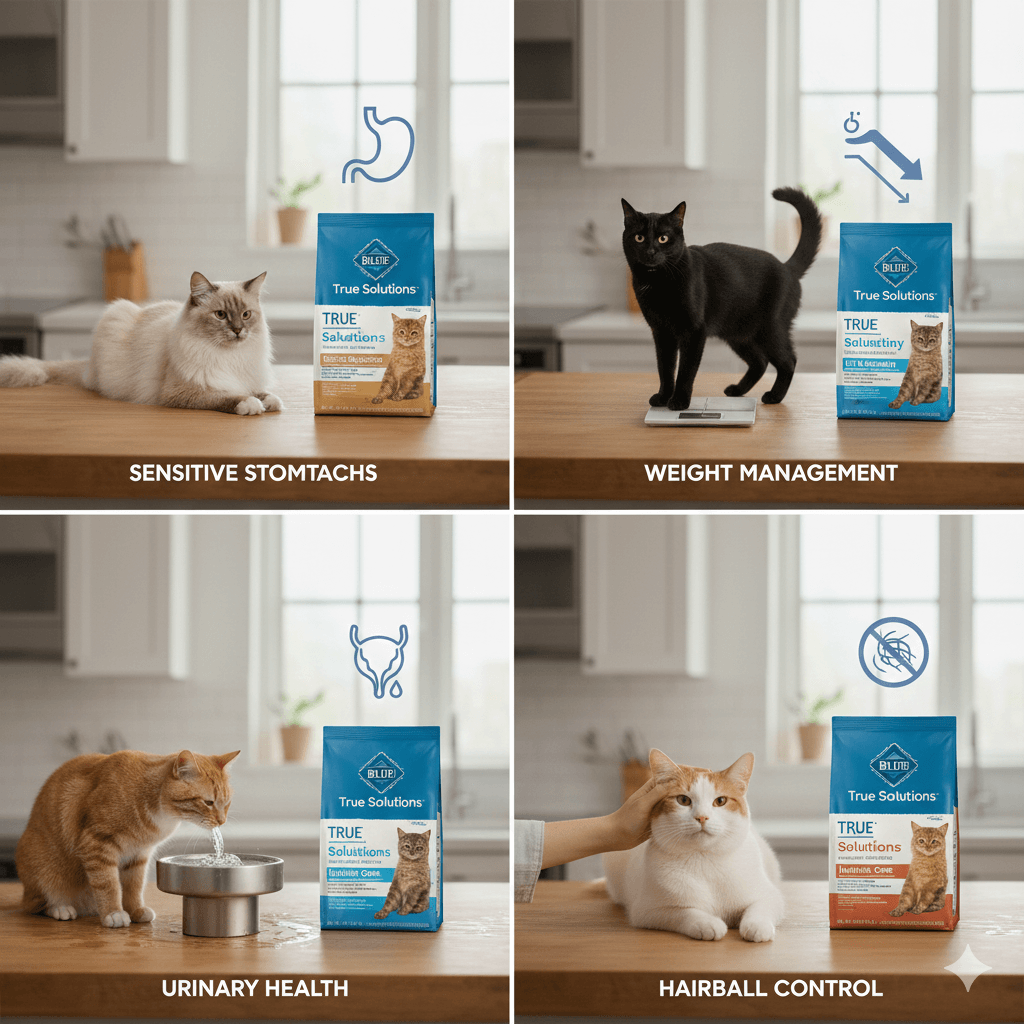Diabetic Dog Diet: Supporting Your Furry Friend’s Health
Managing diabetes in dogs requires careful attention to their diet, as nutrition plays a pivotal role in regulating blood sugar levels and maintaining overall health. A diabetic dog diet isn’t just about restricting certain foods—it’s about creating a balanced meal plan that supports energy needs, stabilizes glucose levels, and enhances quality of life. Whether your dog has recently been diagnosed or you’re looking to refine their current diet, understanding the principles of diabetic-friendly nutrition is essential. In this blog post, we’ll explore everything you need to know about crafting a diabetic dog diet, from key ingredients to feeding strategies, ensuring your four-legged companion stays happy and healthy.
Key Components of a Diabetic Dog Diet
A diabetic dog’s diet should be carefully tailored to meet their unique nutritional needs. Here are the essential components to consider when planning meals for your furry friend.
High-Quality Protein:
Lean proteins like chicken, turkey, or fish provide essential amino acids without spiking blood sugar levels.Low Glycemic Carbohydrates:
Opt for complex carbs like sweet potatoes, green beans, or lentils, which release glucose slowly and prevent sudden spikes.Healthy Fats:
Incorporate sources of omega-3 fatty acids, such as salmon oil or flaxseed, to support skin health and reduce inflammation.Consistent Portion Sizes:
Feeding the same amount at each meal helps maintain stable blood sugar levels throughout the day.Avoid Sugary Treats:
Steer clear of commercial treats high in sugar or artificial additives, as they can disrupt insulin regulation.
By focusing on these dietary elements, you can create a meal plan that supports your dog’s health while managing their diabetes effectively.
Foods to Avoid in a Diabetic Dog Diet
While some foods are beneficial for diabetic dogs, others can worsen their condition or even be toxic. Here’s a list of items to avoid when planning your dog’s meals.
High-Glycemic Foods:
White rice, bread, and potatoes cause rapid increases in blood sugar levels, making them unsuitable for diabetic dogs.Processed Meats:
Hot dogs, bacon, and sausages often contain high levels of sodium and preservatives, which can harm your dog’s health.Sugary Snacks:
Cookies, candies, and flavored yogurt can lead to dangerous blood sugar spikes and should be avoided entirely.Fatty Table Scraps:
Rich, greasy human foods can upset your dog’s digestion and contribute to obesity, complicating diabetes management.Toxic Ingredients:
Grapes, raisins, chocolate, and xylitol (a sugar substitute) are toxic to dogs and must be kept out of reach.
Eliminating these harmful foods ensures your dog’s diet remains safe and supportive of their condition.
Check this guide 👉Dog on Bland Diet Not Pooping: Best 7 Expert Tips!
Check this guide 👉Why Sodium Selenite Matters in Your Dogs Diet: Best 7 Tips!
Check this guide 👉The Perfect Diet for Your Bernese Mountain Dog: Best 7 Tips!

Best Foods for Diabetic Dogs | Foods to Avoid for Diabetic Dogs |
|---|---|
Lean proteins (chicken, turkey, fish) | High-glycemic foods (white rice, bread) |
Low-glycemic veggies (green beans, zucchini) | Processed meats (bacon, hot dogs) |
Healthy fats (salmon oil, flaxseed) | Sugary snacks (cookies, candies) |
Complex carbs (sweet potatoes, lentils) | Fatty table scraps (fried foods) |
Fresh fruits (blueberries, apples) | Toxic ingredients (grapes, xylitol) |
Feeding Strategies for Diabetic Dogs
How and when you feed your diabetic dog is just as important as what you feed them. These strategies ensure consistency and stability in their blood sugar levels.
Stick to a Regular Schedule:
Feed your dog at the same times every day to align with insulin injections and maintain steady glucose levels.Divide Meals into Smaller Portions:
Instead of one large meal, offer two or three smaller meals throughout the day to prevent blood sugar fluctuations.Monitor Water Intake:
Ensure your dog has constant access to fresh water, as dehydration can exacerbate diabetes symptoms.Measure Food Accurately:
Use a kitchen scale or measuring cups to portion food precisely, avoiding overfeeding or underfeeding.Work with Your Vet:
Consult your veterinarian to fine-tune the diet based on your dog’s specific needs and response to treatment.
Implementing these strategies helps create a structured routine that supports your dog’s health and well-being.
Signs Your Diabetic Dog’s Diet Is Working
A well-managed diabetic dog diet will show positive effects on your pet’s health and behavior. Look for these signs to confirm your efforts are paying off.
Stable Energy Levels:
Your dog should have consistent energy throughout the day, without periods of lethargy or hyperactivity.Improved Coat Condition:
A shiny, healthy coat is often a sign of proper nutrition and balanced blood sugar levels.Better Weight Management:
Your dog should maintain a healthy weight, neither gaining nor losing excessive amounts of body fat.Reduced Thirst and Urination:
Excessive drinking and urination are common symptoms of uncontrolled diabetes; a balanced diet helps minimize these issues.Fewer Blood Sugar Spikes:
Regular monitoring by your vet will show more stable glucose readings, indicating effective dietary management.
These indicators demonstrate that your dog’s diet is supporting their overall health and diabetes management.
Common Mistakes to Avoid When Managing a Diabetic Dog Diet
Even with the best intentions, it’s easy to make mistakes when feeding a diabetic dog. Avoiding these pitfalls ensures your pet stays healthy and comfortable.
Overfeeding:
Portion control is crucial; overfeeding can lead to weight gain and worsen insulin resistance.Skipping Insulin Coordination:
Always time meals with insulin injections to prevent dangerous blood sugar fluctuations.Using Human Foods Freely:
Many human foods are toxic or unsuitable for diabetic dogs, so always double-check before offering them.Neglecting Regular Monitoring:
Skipping blood glucose checks or vet visits can lead to unnoticed complications.Changing the Diet Abruptly:
Sudden dietary changes can upset digestion; always introduce new foods gradually.
Avoiding these mistakes ensures a smoother and safer dietary transition for your diabetic dog.
Supplements That Support a Diabetic Dog’s Health
In addition to a balanced diet, certain supplements can enhance your diabetic dog’s well-being. Here are some options to consider under veterinary guidance.
Omega-3 Fatty Acids:
Found in fish oil, these reduce inflammation and support joint and skin health.Probiotics:
Probiotic supplements improve gut health, aiding digestion and nutrient absorption.Chromium:
This mineral helps improve insulin sensitivity, potentially aiding blood sugar regulation.Fiber Supplements:
Adding fiber like psyllium husk slows glucose absorption, promoting stable blood sugar levels.Antioxidants:
Vitamins C and E combat oxidative stress, which is often elevated in diabetic dogs.
These supplements complement a diabetic dog diet, enhancing its effectiveness and supporting overall health.
Tips for Transitioning to a Diabetic-Friendly Diet
Switching your dog to a diabetic-friendly diet requires care and planning to avoid digestive upset. Follow these tips for a smooth transition.
Start Gradually:
Mix small amounts of the new food with the old, increasing the ratio over 7-10 days.Observe Your Dog’s Reaction:
Watch for signs of digestive distress, such as vomiting or diarrhea, and adjust accordingly.Maintain Consistency:
Stick to the new diet once fully transitioned to allow your dog’s body to adapt.Communicate with Your Vet:
Keep your veterinarian informed throughout the process to ensure safety and efficacy.Be Patient:
Some dogs take time to adjust to dietary changes, so persistence is key to success.
Following these tips ensures a successful transition that benefits your diabetic dog’s health in the long run.
Frequently Asked Questions About Diabetic Dog Diets
Can diabetic dogs eat grains?
Yes, but only low-glycemic grains like oats or barley. Avoid refined grains like white rice or wheat flour.
How often should I feed my diabetic dog?
Most diabetic dogs thrive on two meals per day, spaced evenly apart to align with insulin doses.
Are homemade diets better than commercial food?
Homemade diets can be great if properly balanced, but consult your vet to ensure all nutritional needs are met.
What treats are safe for diabetic dogs?
Choose low-calorie, low-carb options like plain green beans, carrots, or specially formulated diabetic dog treats.
Can I change my dog’s diet suddenly?
No, abrupt changes can upset their digestive system. Gradually transition over 7-10 days to avoid complications.
Empowering Your Diabetic Dog Through Nutrition
A diabetic dog diet is more than just a meal plan—it’s a lifeline for managing your pet’s condition and enhancing their quality of life. By providing nutrient-rich, balanced meals and adhering to consistent feeding practices, you can help stabilize their blood sugar levels and promote long-term health. Remember, every dog is unique, so work closely with your veterinarian to tailor the diet to your pet’s individual needs. With patience, dedication, and the right approach, you can give your diabetic dog the care and support they deserve, ensuring many happy, healthy years together.
Blue Buffalo Cat Food: Best 7 Expert Tips! Discover how to choose the right formula, feeding strategies, and nutritional benefits for your feline friend.
Canned Pumpkin for Cat Diarrhea: Best 7 Expert Tips! Natural remedy to firm stools, soothe upset bellies, and support gut health safely.
Can a Cat Give You Scabies? Best 7 Expert Tips! Discover the truth about feline mites, human skin risks, and how to protect yourself—without panic.
Cat Flea vs Human Flea: Best 7 Expert Tips! Discover the truth about bites, species, and how to eliminate infestations for good.




